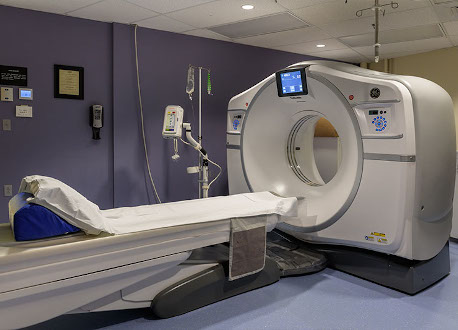Interventional Radiology
Overview
Peninsula Radiological Associates’ four board certified Interventional Radiologists specialize in the performance of minimally invasive procedures, using image guidance such as CT, Ultrasound and fluoroscopy to diagnose and treat complex conditions that once required open surgery, less invasive, and with incredible precision. Often IR procedures provide significant benefits over open surgical techniques, including shorter recovery times, decreased post procedure pain, and fewer complications.
Types of diseases treated with interventional radiology include:
- Arterial and Venous Vascular disease
- Central venous access
- Biliary Diseases
- Dialysis access
- Trauma and Bleeding
- Tumor embolization
- Chemotherapy Port placement
- Tumor biopsy
- Bone Marrow biopsy



Common Uses of Interventional Radiology
- Angiography: An X-ray exam of the arteries and veins to diagnose blockages and other blood vessel problems.
- Balloon Angioplasty: Opens blocked or narrowed blood vessels by inserting a very small balloon into the vessel and inflating it.
- Biliary Drainage and Stenting: A stent to open up blocked ducts and allow bile to drain from the liver.
- Central Venous Access: Insertion of a tube to allow patients to receive medication or nutrients directly into the blood stream or so blood can be drawn.
- Chemoembolization: Delivery of cancer-fighting agents directly to the site of a tumor.
- Embolization: Delivery of clotting agents directly to an area that is bleeding or to block blood flow to an aneurysm or a fibroid tumor in the uterus.
- Fallopian Tube Catheterization: A treatment for infertility – uses a catheter to open blocked fallopian tubes without surgery.
- Gastrostomy Tube: Feeding tube inserted into the stomach for patients who are unable to take sufficient food by mouth.
- Hemodialysis Access Maintenance: Use of angioplasty or thrombolysis to open blocked grafts for hemodialysis.
- Needle Biopsy: Diagnostic test for breast, lung and other cancers; an alternative to surgical biopsy.
- Radio Frequency (RF) Ablation: Use of radio frequency energy to cook and kill cancerous tumors.
- Stent: A small flexible tube used to treat a variety of medical conditions.
- Stent-Graft: Reinforces a ruptured or ballooning section of an artery (an aneurysm) with a fabric-wrapped stent
- Thrombolysis: Dissolves blood clots by injecting clot-busting drugs at the site of the clot.
- TIPS (transjugular intrahepatic portosystemic shunt): A procedure to improve blood flow and prevent hemorrhage.
- Uterine Artery Embolization: A procedure of uterine arteries to stop life- threatening postpartum bleeding, potentially preventing hysterectomy. The same procedure is used to treat fibroid tumors.
- Uterine Fibroid Embolization: A procedure of uterine arteries to shrink painful, enlarged, benign tumors in the uterus.
- Biliary Interventions: Procedures performed to treat blockages or narrowing in bile ducts or treat an inflamed or infected gallbladder.
- Dialysis Access: A entranceway into the bloodstream that lies completely beneath your skin, it allows blood to be removed and returned quickly, efficiently, and safely during dialysis.
